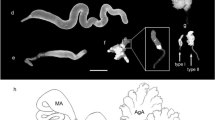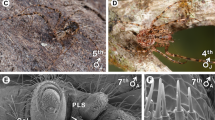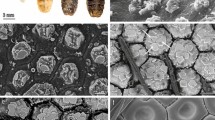Abstract
RECENTLY it was reported1 than when the corpora allata in the Eri silkworm pupæ were transplanted into artificially diapausing pupæ which were obtained by removing their brains at early pupal time, the diapausing pupæ were induced to emerge in 25 days after the implantation. On the contrary, when the corpora allata derived from the fourth, the fifth instar larvæ or moths of the same insect were transplanted into the artificially diapausing pupæ of the Eri silkworm, most operated animals entered the second pupal instar several weeks after transplantation. The same results were obtained in an experiment on the Cecropia silkworm2. When the corpora allata from the Cecropia moths were transplanted into the diapausing pupæ of Hyalophora cecropia, the operated insects became the second pupæ.
This is a preview of subscription content, access via your institution
Access options
Subscribe to this journal
Receive 51 print issues and online access
$199.00 per year
only $3.90 per issue
Buy this article
- Purchase on Springer Link
- Instant access to full article PDF
Prices may be subject to local taxes which are calculated during checkout
Similar content being viewed by others
References
Ichikawa, M., and Nishiitsutsuji-Uwo, J. Biol. Bull., 116, 88 (1959).
Williams, C. M., Biol. Bull., 116, 323 (1959).
Kobayashi, M., and Yamashita, Y., J. Sericul. Sci. Japan, 28, 335 (1959).
Author information
Authors and Affiliations
Rights and permissions
About this article
Cite this article
KOBAYASHI, M. Function of the Corpus Allatum in ‘Dauer-pupa’ of the Silkworm, Bombyx mori . Nature 187, 346–347 (1960). https://doi.org/10.1038/187346b0
Issue Date:
DOI: https://doi.org/10.1038/187346b0
This article is cited by
Comments
By submitting a comment you agree to abide by our Terms and Community Guidelines. If you find something abusive or that does not comply with our terms or guidelines please flag it as inappropriate.



